Traditions and Trends at the Tokyo Food Summit 2023
The Flavors Of Japan, From Ancient To Up-And-Coming
Tokyo restaurants gathered to celebrate three days of Japanese cuisine by representing each of the 47 prefectures.
The inaugural Tokyo Food Summit, held over November 20-22, 2023, at Tokyo Big Sight, celebrated domestically sourced ingredients from each of Japan’s 47 prefectures. The event hosted stars from YouTube and TV and featured special interest areas around two main themes: sustainable consumption and Japanese tradition. We checked out a few panels and took our time tasting around the event to bring you some takeaways.
Savories: Ostrich, Wild Boar and Venison
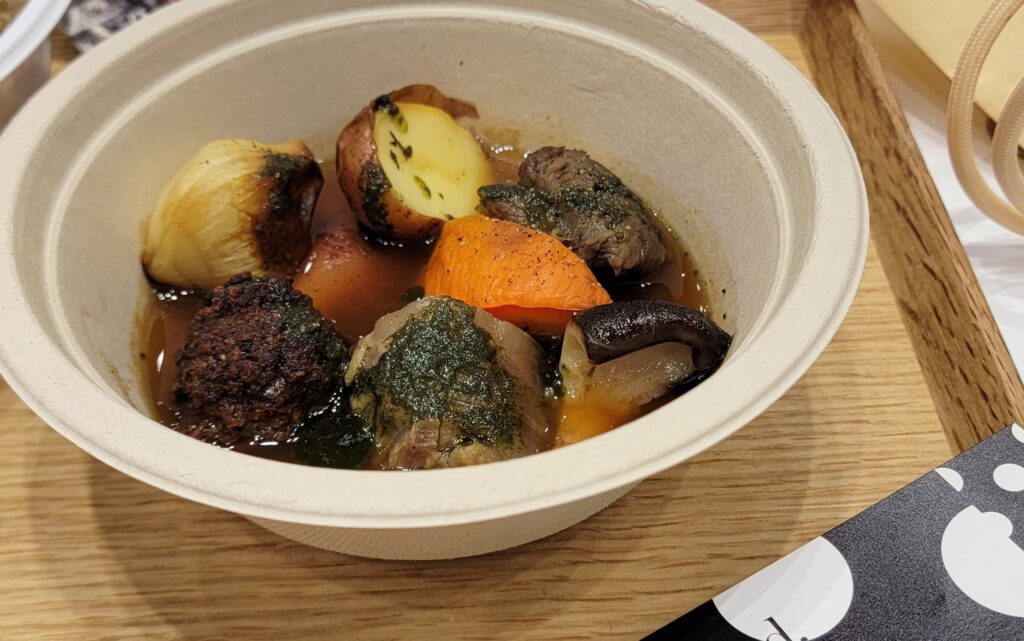 © Photo by Sydney Seekford
© Photo by Sydney SeekfordThanks partly to an effort to highlight alternative meat, savories got the spotlight! Michelin-starred Noeud. Tokyo came prepared for the chilly weather with an ostrich meat pot au feu and an effervescent shrub. According to Noeud., ostrich meat is an ideal, sustainable substitute for beef. The animals can be raised on very little feed due to their acclimation to arid savannah environments and require significantly less space to be safely farmed.
Ostrich offers a cost- and space-effective alternative to cows, but what about the taste? We found it pretty hard to swallow at first! However, the ostrich meatball was beefy without being fatty and the stewed cubes pulled apart just like a pot roast. With its rich red meat color, get a good bite and you might not notice a difference.
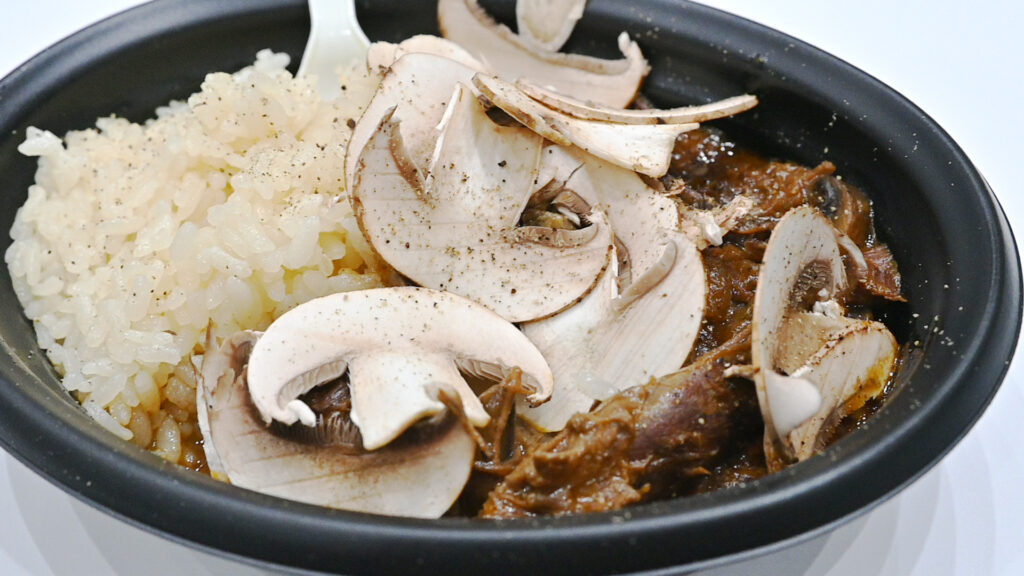 © Photo by Sydney Seekford
© Photo by Sydney SeekfordWhile Noeud. introduced agricultural innovation with its dish, Shutei Hokura and Elezo headed into the woods to cook up wild boar and venison dishes rooted in Japan’s ancient hunting tradition. A modern turn towards sustainability encourages revisiting these practices to curb the growing issue of wildlife encroaching on human settlements. Not only does hunting keep down populations, but it also provides healthy, free-range meat for hungry customers.
Studies: Minimizing Waste and Hokusai Cuisine Art
 © Photo by Sydney Seekford
© Photo by Sydney SeekfordIn addition to learning from the restaurateurs who came to treat us, we also got tips from panelists like Mari Yukinaga from Nippon Television’s 50-Yen Ryori. Yukinaga’s panel tied up with the sustainability theme by introducing ways to reduce food loss. Did you know that the average Japanese person throws away about an onigiri (rice ball) worth of food a day? Moreover, the food waste ratio between businesses and individual households is almost evenly split!
So, how do we take steps to minimize this waste? Yukinaga focused on using food scraps in ways that render them both delicious and long-lasting. Her first recommendation is repurposing old sauces into long-simmered dishes like nikomi (stew) and soups. Applying heat and dilution extends the flavor of everything from ketchup to yakiniku (Japanese barbecue) sauce that’s past its prime. Yukinaga even introduced a way to turn slightly suspicious milk into a warming hot pot by combining it with two parts stock, ginger and lemon juice. These particular spices are antiseptic and give the soup a buttermilk tang.
 © Photo by iStock: GI15702993
© Photo by iStock: GI15702993Her second method involved variations on pickling to repurpose vegetable scraps into tasty sides. Whether it’s persimmon skin with lemon juice and sugar, or carrot and daikon peel with salt and vinegar, these preserved scraps add flavor to salads or meat dishes.
We studied washoku (Japanese cuisine) through an interactive search-and-find exhibit featuring illustrations by Hokusai, the famed painter of The 36 Views of Mount Fuji. We found the first two easily: mochi being pounded for New Year’s and dripping summer somen (thin noodles). But the third drawing was far more elusive; it depicted a dish we had never heard of!
 © Photo by Sydney Seekford
© Photo by Sydney SeekfordAfter a great deal of hunting and some hints from the staff, we found what appeared to be an illustration of a street vendor making crepes. In the Edo era, flour and water scraped flat and smeared with anko (sweet red bean) was a popular street snack called mojiyaki that eventually became modern monjayaki. We learned a lot!
Surprises: Whale Promotion and Unique Mixes
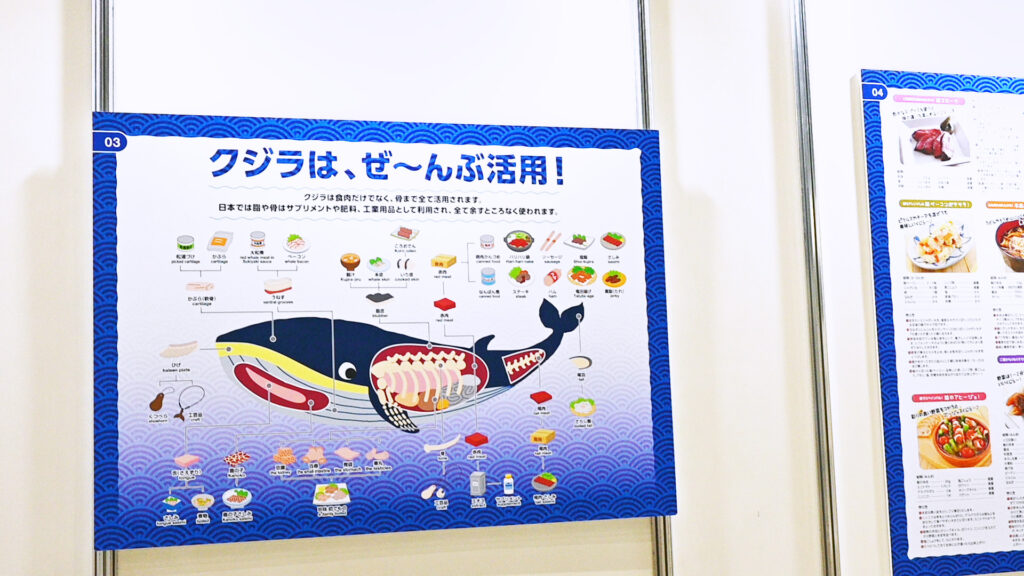 © Photo by Sydney Seekford
© Photo by Sydney SeekfordThe Tokyo Food Summit provided plenty of surprises, too, including a promotion zone for Japan’s traditional whaling industry. As one might see in a butcher shop, posters showed off different cuts of whale for different cooking methods. Needless to say, we didn’t expect to see something as controversial as whale being promoted as a low-fat and high-protein meat for daily consumption! Like ostrich, whale has similarities to beef. The kujira-nigiri (whale sushi) from Tsukiji no Kujira (Formerly Kujirua no Tomisui) looked exactly like a slice of roast beef. Unlike ostrich, the fried whale nuggets had a gamey pungency that made our earlier deer and wild boar taste like chicken! Fans of game or distinctive flavor won’t be turned off by the funk, which reminded us of pet-nat wine and natto.
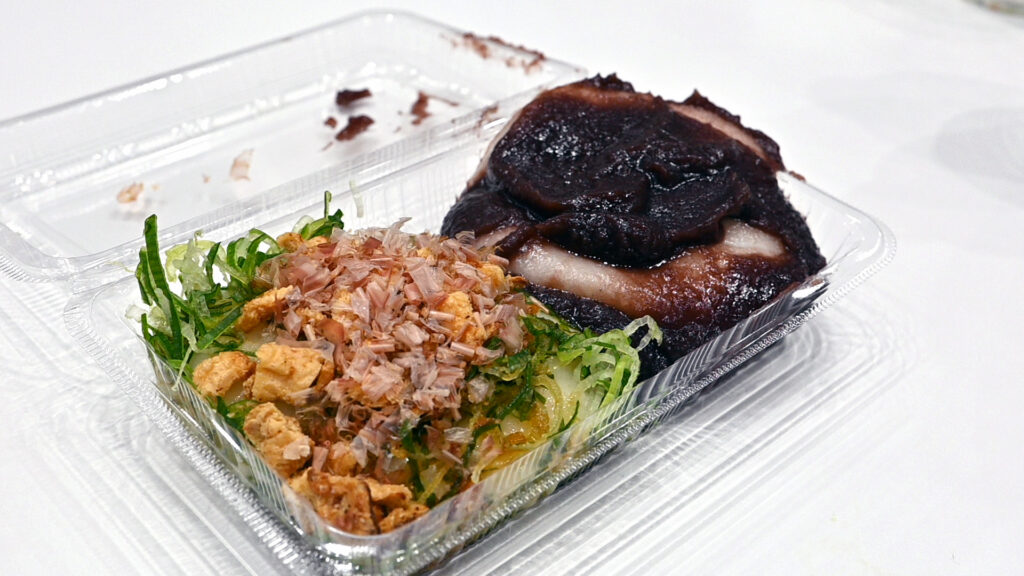 © Photo by Sydney Seekford
© Photo by Sydney SeekfordOther surprises were more understated, like the strikingly delicious salad at Restaurant Re: made with trout from Tochigi and micro cucumbers grown by the chef’s mother. Our favorite dish of the day was a still-warm mochi by Chaya Hanakanmuri. The sticky rounds had a perfect rice flavor and no sweetness at all. At first, we were a little skeptical about the chef’s recommendation of fried tofu and raw onion with bonito…but it was delicious—even served right next to a thick dollop of anko paste. For a dish we all expected would lean sweet, the light flavor of both toppings was a welcome respite from a buffet of meat dishes.
Experience Washoku Everyday
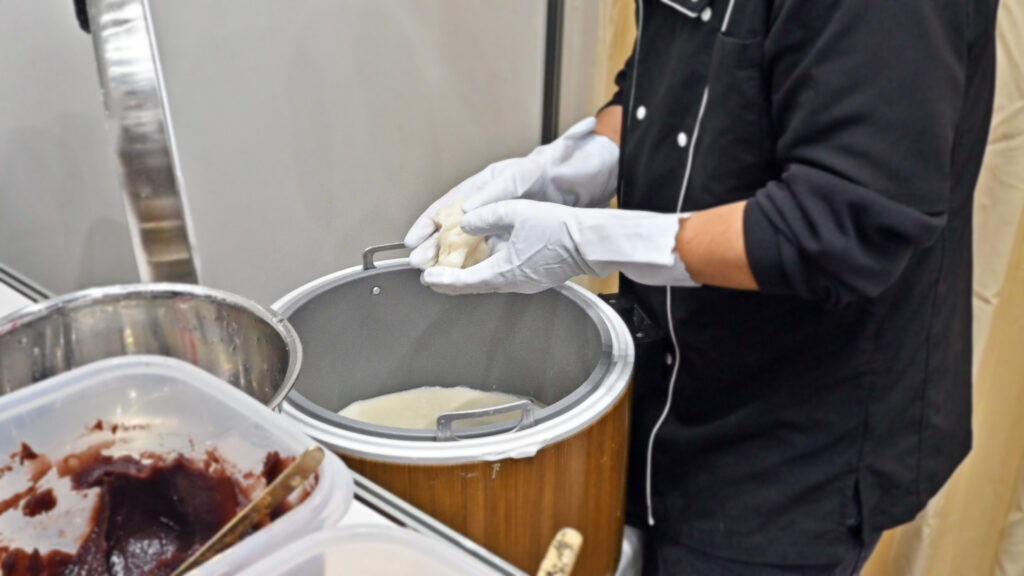 © Photo by Sydney Seekford
© Photo by Sydney SeekfordThe first Tokyo Food Summit may have only lasted three days mid-week, but that doesn’t mean the event is over. A registered intangible cultural heritage, washoku can’t be contained in any convention hall. It’s on the streets of Tokyo, in every home and kitchen in the country, from store-bought sushi to gourmet teppan and station soba.
Support Tokyo’s food culture by visiting restaurants nearby and showing local business owners you care about traditional Japanese cooking. For a more immersive experience, like the ones we enjoyed at the Hokusai booth and specialty promotion spaces, visit the National Museum of Nature and Science in Ueno. A washoku exhibition is going on through February 25, 2024, so you have plenty of time to make the trip.












This sounds amazing!! I would love to try wild boar when I finally visit, thanks for sharing!